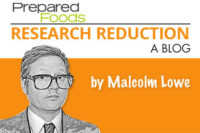Reducing Sodium

According to study author Dr. Jan Staessen of the University of Leuven in Belgium, the new findings “certainly do not support the current recommendation to lower salt intake in the general population.” For their analysis, the Belgian researchers examined data from two separate studies involving a total of nearly 3,700 Europeans with an average age of 40, among whom sodium was measured through urine samples taken at the beginning and end of the studies. Among the participants, none had heart disease, while two thirds had normal blood pressure, when the study began. The subjects were divided into three groups, including those with the highest and lowest salt intakes, and those with average intake. The participants were followed for an average of eight years, during which time the researchers tracked the number who were diagnosed with heart disease and hypertension.
Findings revealed that those having the lowest levels of sodium, an average of about 2,500mg, a little more than one teaspoon daily, gained no benefit in reduction of risk against development of high blood pressure than those who had the highest levels of sodium--an average of nearly 6,000mg per day. In fact, heart disease deaths were reduced with higher sodium intake, as 50 deaths occurred among the one third of the participants having the lowest sodium intakes; there were only 24 deaths among those with average intakes; and just 10 deaths occurred among those with the highest sodium intakes.
However, the USDA has taken a definite lower-sodium stance, as its 2010 Dietary Guidelines for Americans urged the U.S. population to reduce sodium consumption to less than 2,300mg, a 100mg per day reduction from the current daily value of 2,400mg. The Guidelines advise sodium intake should be reduced to 1,500mg among persons who are 51 and older; African-American; or have hypertension, diabetes or chronic kidney disease. The Guidelines say the 1,500mg recommendation applies to about half of the U.S. population, including some children and the majority of adults, but a new study by the Centers for Disease Control and Preventions used national data to show that 69.2% of the adult population should aim to consume no more than 1,500mg of sodium per day.
Self-reported intake data from the “Third National Health and Nutrition Examination Survey” (NHANES III) indicate the estimated median intakes of sodium among adult men and women age 31-50 are 4,300mg and 2,900mg of sodium per day, respectively. Approximately 95% of adult men and 75% of adult women exceed the UL of 2,300mg of sodium per day, and 100% exceed the AI of 1,500mg of sodium per day. For that matter, International Food Information Council (IFIC) consumer research conducted in 2010 discovered awareness of sodium to be low:
• Nearly half of all consumers did not know how much sodium a healthy person should consume each day, and half of all consumers did not know how much sodium they personally consume each day.
• Most people read a food label or package to find out if a product is high or low in sodium. Yet, the majority of consumers could not define a “high” or “low” sodium food, in mg per serving.
• Roughly six in 10 of all consumers were not concerned about how much sodium they get, but they think others should be worried, especially people with high blood pressure and weight issues.
Indeed, the issue may not be solely with too much sodium consumption, if one study is to be believed. A Journal of the American College of Cardiology study by Dr. Pasquale Strazzullo, a professor of medicine at the Federico II University of Naples Medical School, in Italy, published online on March 1 ahead of print finds an imbalance in sodium consumption vs. potassium consumption, and it says this imbalance is leading to higher rates of heart disease and stroke. Multiple nationwide studies, such as one published January 29, 2009, in the Archives of Internal Medicine, have analyzed the risks of a high-sodium, low-potassium diet. The average American ingests 2,600mg of potassium a day vs. the 4,700mg recommended by the USDA's Center for Nutrition Policy and Promotion. At the same time, Americans consume 4,000mg or more of sodium daily, far higher than the suggested 2,300mg recommended maximum. While healthy dietary guidelines proposed in the Archives of Internal Medicine suggest a 2-to-1 ratio of potassium to sodium, the actual average intake is nearly a 2-to-3 ratio.
However, the standard response has been to reduce sodium levels, and manufacturers have introduced a flood of low-sodium versions of their products. Zatarain's now boasts Reduced Sodium Rice Mixes in such varieties as black beans & rice (promising 25% less sodium than its original version but nevertheless containing 860mg [36% of the recommended daily allowance]); dirty rice; Jambalaya; and red beans & rice. Goya Foods likewise has a low-sodium range of beans, with its black, pinto, red kidney, pink and chickpeas options promising at least two thirds less sodium than its traditional Blue Label varieties. Campbell Soup quadrupled its low-sodium options between 2005-2009, and ConAgra has announced plans to cut its overall sodium usage by 20% by 2015--the same deadline General Mills has set for a 20% sodium reduction in more than 600 of its products. Sara Lee has that same 20% sodium-reduction target in “key product categories including fresh bread, hot dogs, lunch meat, breakfast foods and cooked sausage,” but it is aiming to complete that goal by 2014.
From the May 16, 2011, Prepared Foods E-dition
Looking for a reprint of this article?
From high-res PDFs to custom plaques, order your copy today!




